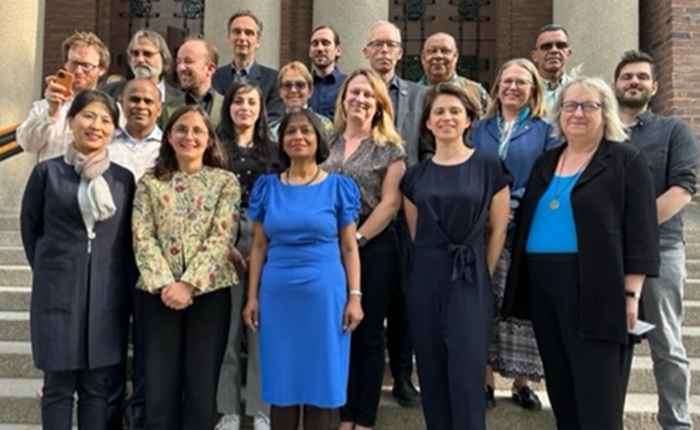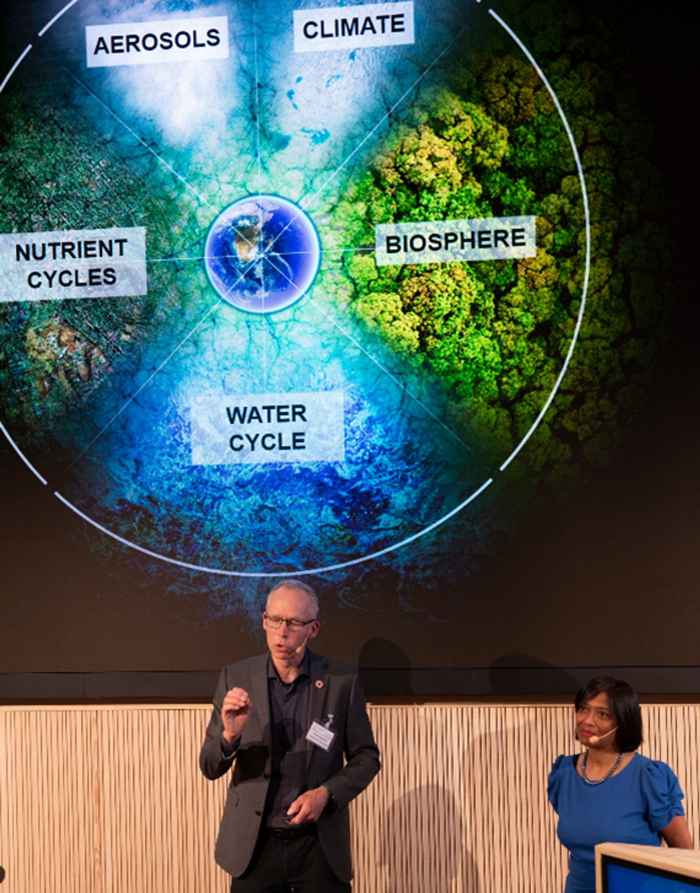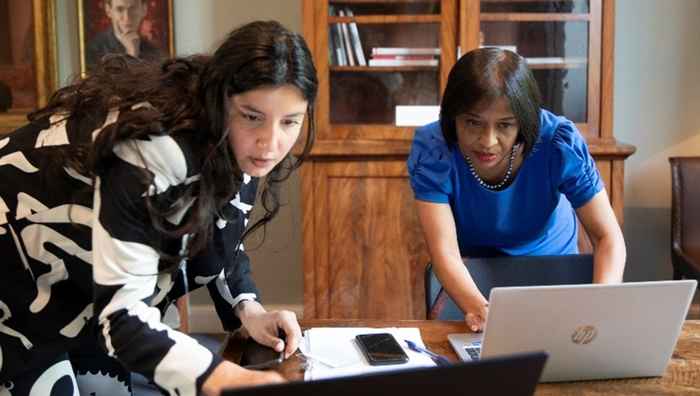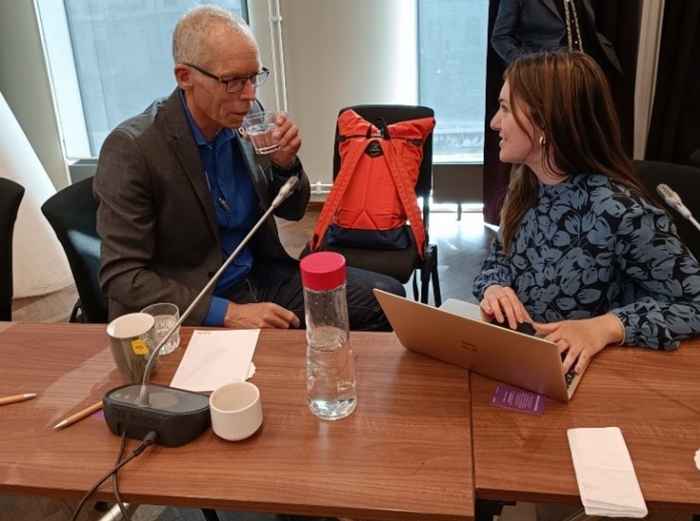The Safe and Just framework sets the base for new and inclusive climate action
by Paola Fezzigna & Giuliana Gentile

On May 31st, Future Earth and the Earth Commission jointly hosted the presentation of the Safe and Just Earth system boundaries paper, at the Royal Swedish Academy of Science. The study, published in Nature, took four years to complete and involved more than 50 natural and social scientists from around the world that share the mission to define a safe and just corridor for people and the planet. Our own Prof. Joyeeta Gupta is the co-chair together with Johan Rockström, from the Potsdam Institute for Climate Impact Research, and Qin Dahe, from the Chinese Academy of Sciences. This paper builds on a paper published in Nature Sustainability on Justice and on what meeting the Access needs of people implies for planetary boundaries.
The main results of this paper were the following:
• Justice was incorporated for the first time into boundary setting, as a result of the cooperation among social and natural scientists,
● The safe and just boundaries were set at operational scales for assessment and management (including sub-global levels for most boundaries),
● The safe and just boundaries were assessed at multiple likelihood levels,
● The tipping point assessments were key, though not exclusive evidence for ESBs.

In only 24 hours it has received an astounding response from 212 news outlets (including CNN, BBC, The Guardian, The Independent, etc.), social media (806 users only on Twitter), and the academic community, quickly reaching the top 5% of all research outputs scored by Altmetric, and more than 100.000 downloads in less than a week.
Joyeeta Gupta and Johan Rockström opened the symposium in the Beijer Hall, of the Royal Swedish Academy of Sciences, with a presentation of their Safe and Just framework: the new and improved version of the Planetary Boundaries, which shows through quantitative calculations the difference between the safe boundaries (for a healthy planet), and the just boundaries (for a just world).
The symposium developed into a series of illuminating debates, including stakeholders from various backgrounds (such as policymaking, economics, law, and business). The conclusions that emerged were the recognition of the importance of including justice in climate mitigation efforts, and the cooperation among natural and social scientists, as well as more open and transparent channels of communication between science and policy. Lastly, they emphasized the need for more stringent boundaries and immediate climate action aimed to leave no one behind.
We asked the co-chairs what advice would they give to early career researchers to succeed in their own field:

Joyeeta Gupta: “My first recommendation would be to adopt a T-shaped approach, beginning by publishing in specialized journals that are relevant to your specific research field, and once you have established a foundation, you move to interdisciplinary research. It is crucial to start as a co-author, as this allows you to develop writing skills and gain a comprehensive understanding of the publication process. After acquiring this experience you should progress to becoming the main author. Besides this, young researchers need to define a niche topic in order to become experts and gain expertise. To succeed in the academic landscape you need a combination of determination, the ability to complete the job, and the willingness to communicate the narrative to different audiences in a way that is easy and accessible to people outside their research field. This is why I strongly encourage young researchers to undertake teaching activities, guide bachelor and master students, and engage in a learning-sharing process. Lastly, holding public presentations is vital as it not only enhances personal skills but also serves as a means to test the viability of your research question”.

Johan Rockström: “I would begin by emphasizing the importance of selecting the right research question. Rather than focusing on tactical decisions, it is crucial to follow your passion and choose a research question that genuinely interests you. By doing so, you will be driven by energy and enthusiasm, which will prove invaluable during the more challenging aspects of your PhD journey. Being a PhD student requires patience, is a tough task. Young researchers should aim at becoming very skilled and knowledgeable in their own field, so it’s important to choose a topic that feels like “your own”. The second piece of advice would be to be picky when comes to choosing the supervisor, recognize whose name will help to stand out in the field, and who will expose you to a dynamic environment. My final suggestion is to not focus only on publications. Use the PhD time by engaging in various activities. These include seeking media exposure, holding presentations, applying for funding opportunities, and pushing yourself beyond your comfort zone. Actively participating in debates and immersing yourself in a broader societal context are crucial elements in establishing yourself as a well-rounded individual, not just within academia”.